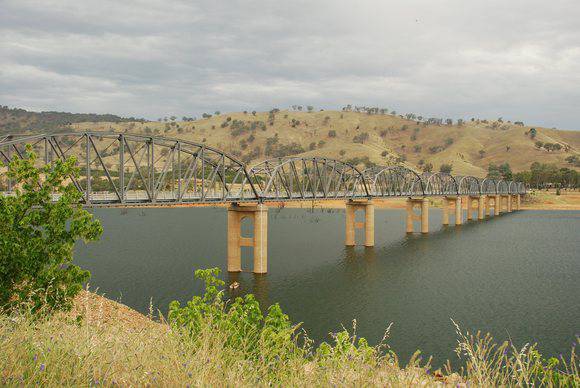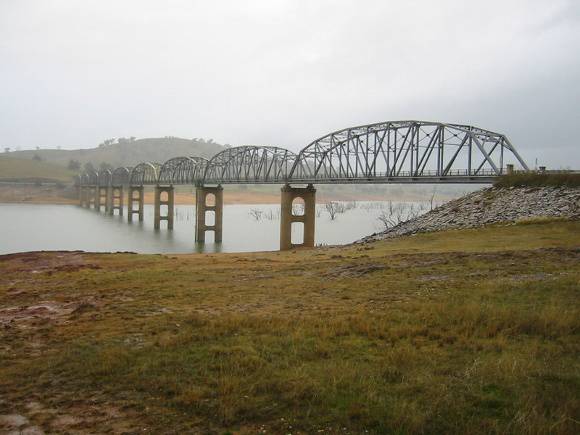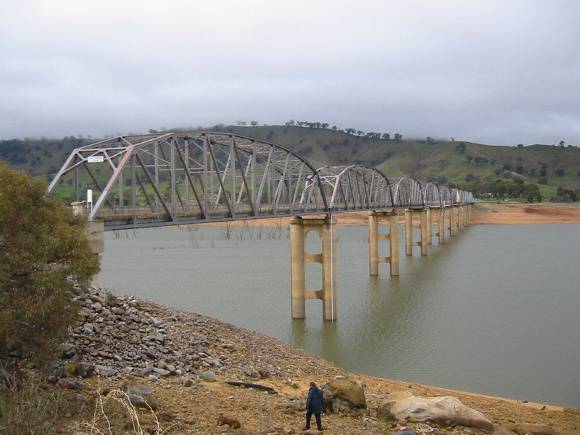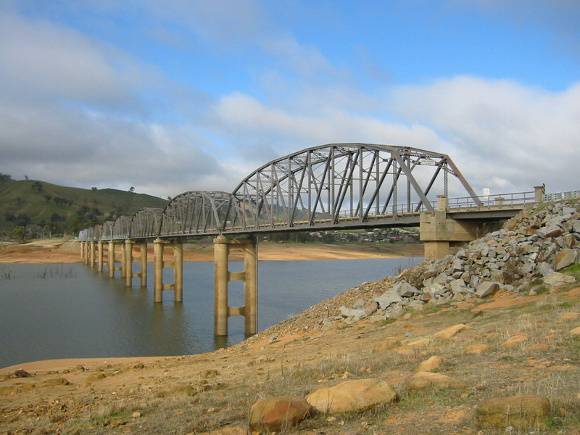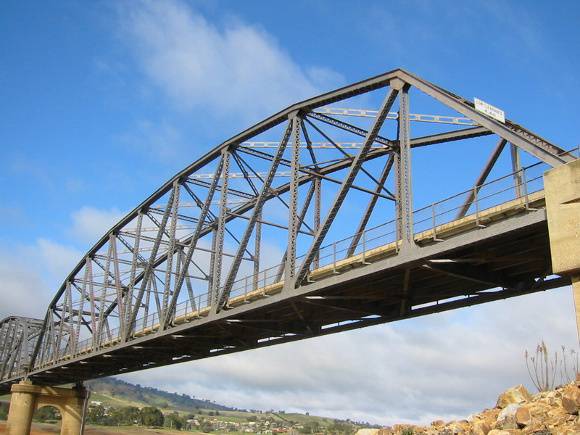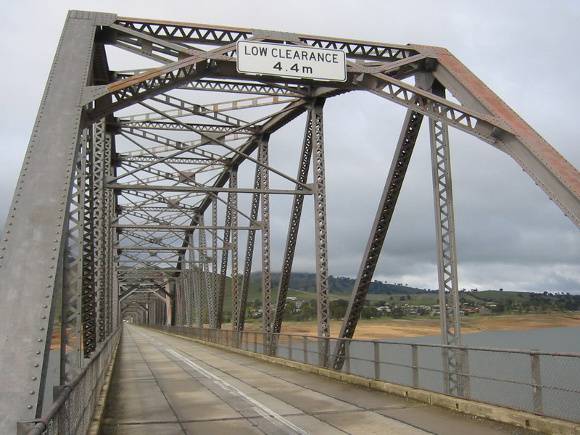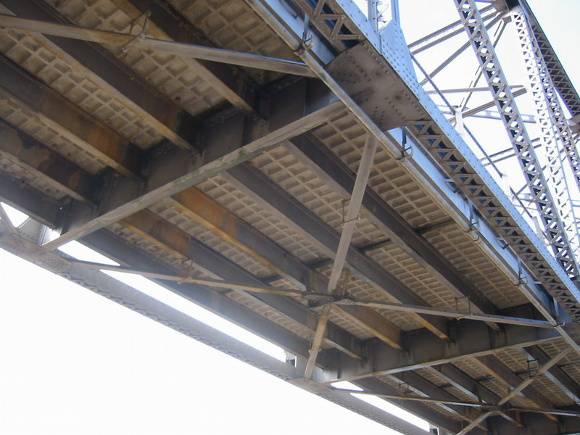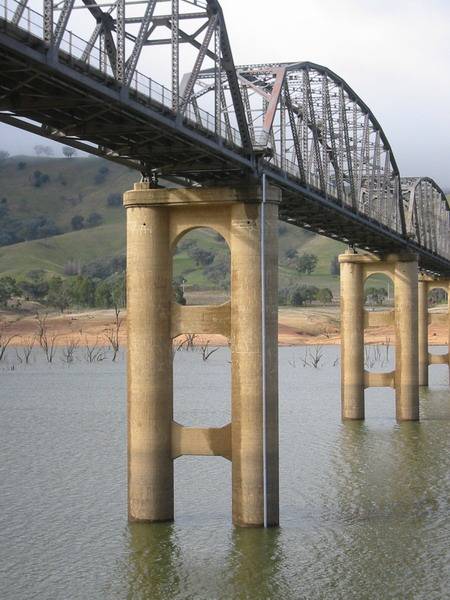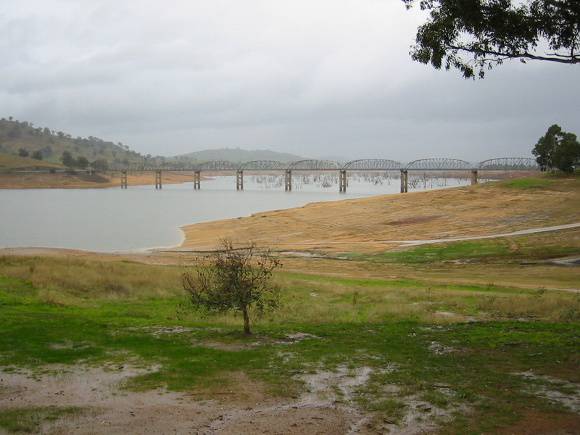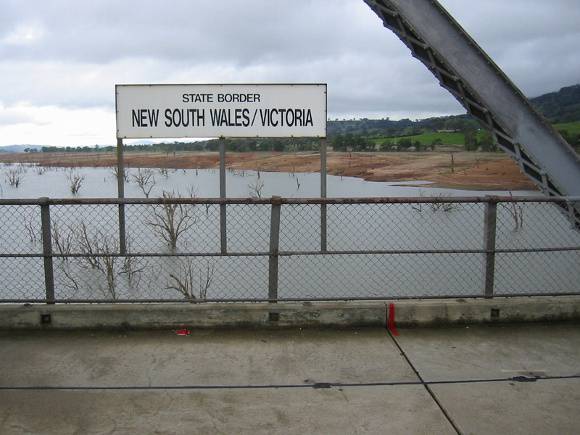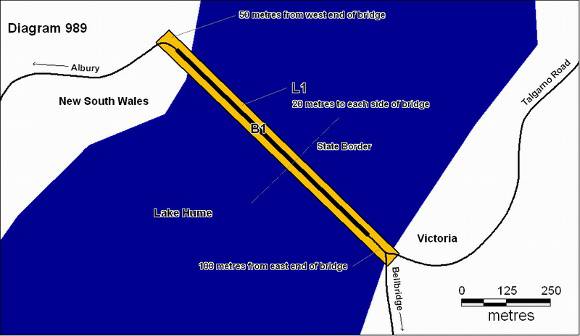| Back to search results » | Back to search page » |
|
BETHANGA BRIDGE
Statement of Significance
What is Significant? The Bethanga Bridge is a road bridge over a flooded section of a Murray River valley that now forms part of the Hume Dam. The bridge consists of nine spans of 82 metres, each span being supported between double reinforced concrete pylons by a riveted steel camel back Pratt truss plus a 14 metre approach span on the New South Wales side. The overall span is 752 metres. The road deck was initially timber but was replaced in 1961 with the current concrete waffle slab deck. The road deck is 7.7 metres wide. In 1961 the bridge deck and truss structure was also raised by 300mm in response to the upgrading of Hume Dam and works to increase the storage capacity of the dam. The use of Pratt trusses is unusual in Victoria, not being readily taken up as a viable bridge design. However they are more common in New South Wales. The use of the Pratt truss in this instance reflects the mode of construction employed during the construction of the Hume Dam whereby the New South Wales Department of Public Works and the Victorian State Rivers and Water Supply Commission were jointly responsible for the design and construction of the bridge. The bridge was designed in New South Wales by Department of Main Roads engineer Percy Allen and the trusses were built by Vickers Ruwolt in Melbourne. The Murray River border between New South Wales and Victoria is the top of the southern bank of the river. As such all structures over the river are generallyconsidered to be in New South Wales. However, because of its unique location, over the waters of a dam with the border running down the centre of the body of water, the Bethanga bridge is the only built structure shared by both New South Wales and Victoria.
The Bethanga Bridge, was built between 1927 and 1930 as a joint venture between New South Wales and Victoria as part of the Hume Dam project and as a key element of the River Murray Waters Agreement.The Agreement was put in place in 1915 by the Victorian, New South Wales, South Australian and Federal governments to regulate the flow of the Murray River as a provision against drought and to ensure that the three states received their agreed share of water. The River Murray Commission was created to manage the task of putting the agreement into effect.
How is it Significant?
Bethanga Bridge is of historical and scientific (technical) significance to the State of Victoria
Why is it Significant?
Bethanga Bridge is of historical significance to the State of Victoria for its associations with the construction of Hume Dam. It is also of historical significance for its associations with the River Murray Waters Agreement and the River Murray Commission.
Group
Utilities - Water
Category
Other - Utilities - Water


